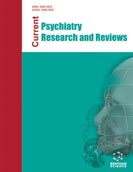Abstract
Background: Depression is a heavily prevalent mental disorder. Symptoms of depression extend beyond mood, cognition, and behavior to include a spectrum of somatic manifestations in all organic systems. Changes in sleep and neuroendocrine rhythms are especially prominent, and disruptions of circadian rhythms have been closely related to the neurobiology of depression. With the advent of increased research in chronobiology, various pathophysiologic mechanisms have been proposed, including anomalies of sleep architecture, the effects of clock gene polymorphisms in monoamine metabolism, and the deleterious impact of social zeitgebers. The identification of these chronodisruptions has propelled the emergence of several chronotherapeutic strategies, both pharmacological and non-pharmacological, with varying degrees of clinical evidence.
Methods: The fundamental objective of this review is to integrate current knowledge about the role of chronobiology and depression and to summarize the interventions developed to resynchronize biorhythms both within an individual and with geophysical time.
Results: We have found that among the non-pharmacological alternatives, triple chronotherapywhich encompasses bright light therapy, sleep deprivation therapy, and consecutive sleep phase advance therapy-has garnered the most considerable scientific interest. On the other hand, agomelatine appears to be the most promising pharmacological option, given its unique melatonergic pharmacodynamics.
Conclusion: Research in chronotherapy as a treatment for depression is currently booming. Novel interventions could play a significant role in adopting new options for the treatment of depression, with Tripe Cronotherapy standing out as the most promising treatment.
Keywords: Depression, chronobiology, chronotherapy, chronodisruption, agomelatine, sleep.
[http://dx.doi.org/10.11622/smedj.2016174 ] [PMID: 27872937]
[http://dx.doi.org/10.1155/2011/839743 ] [PMID: 21845223]
[http://dx.doi.org/10.1590/S0036-36342013000100011 ] [PMID: 23370261]
[http://dx.doi.org/10.1155/2019/7943481 ] [PMID: 30719038]
[http://dx.doi.org/10.2174/1570159X18666200413144401 ] [PMID: 32282306]
[http://dx.doi.org/10.1002/j.2051-5545.2010.tb00298.x ] [PMID: 20975857]
[http://dx.doi.org/10.1101/cshperspect.a033613 ] [PMID: 29038118]
[http://dx.doi.org/10.1016/j.jsmc.2015.07.004 ] [PMID: 26568124]
[http://dx.doi.org/10.1016/j.mam.2016.04.007 ] [PMID: 27112802]
[http://dx.doi.org/10.1152/advan.00107.2015 ] [PMID: 26628646]
[http://dx.doi.org/10.3389/fphys.2019.00682 ] [PMID: 31293431]
[http://dx.doi.org/10.1016/j.csbj.2015.07.001 ] [PMID: 26288701]
[http://dx.doi.org/10.1101/cshperspect.a028720 ] [PMID: 27920039]
[http://dx.doi.org/10.1111/acps.12828 ] [PMID: 29069527]
[http://dx.doi.org/10.1038/nature11704 ] [PMID: 23151577]
[http://dx.doi.org/10.4414/smw.2014.13984] [PMID: 25058693]
[http://dx.doi.org/10.1177/1751143717692603 ] [PMID: 28979558]
[http://dx.doi.org/10.1146/annurev-physiol-021909-135821 ] [PMID: 20148687]
[http://dx.doi.org/10.1152/physrev.00009.2009 ] [PMID: 20664079]
[http://dx.doi.org/10.1016/j.cub.2013.06.039 ] [PMID: 23910656]
[http://dx.doi.org/10.1002/hup.964 ] [PMID: 18680211]
[http://dx.doi.org/10.1016/j.jsmc.2015.08.003 ] [PMID: 26568118]
[http://dx.doi.org/10.1146/annurev-physiol-021909-135919 ] [PMID: 20148688]
[http://dx.doi.org/10.1523/ENEURO.0205-18.2018] [PMID: 30283813]
[http://dx.doi.org/10.1186/1740-3391-4-2 ] [PMID: 16480518]
[http://dx.doi.org/10.1016/B978-0-12-396971-2.00007-5 ] [PMID: 23899598]
[http://dx.doi.org/10.1111/dom.12512 ] [PMID: 26332965]
[http://dx.doi.org/10.1096/fj.14-256594 ] [PMID: 25063847]
[http://dx.doi.org/10.3390/ijms18050938 ] [PMID: 28468274]
[http://dx.doi.org/10.1530/JOE-16-0054 ] [PMID: 27154335]
[http://dx.doi.org/10.1101/cshperspect.a027706 ] [PMID: 28049647]
[http://dx.doi.org/10.1007/s12576-018-0597-5 ] [PMID: 29460036]
[http://dx.doi.org/10.1016/bs.mie.2014.11.001 ] [PMID: 25707273]
[http://dx.doi.org/10.1146/annurev-neuro-060909-153128 ] [PMID: 22483041]
[http://dx.doi.org/10.2108/zsj.21.359 ] [PMID: 15118222]
[http://dx.doi.org/10.1016/j.neuroscience.2016.01.072 ] [PMID: 26861419]
[http://dx.doi.org/10.3389/fnsys.2015.00074 ] [PMID: 26005407]
[http://dx.doi.org/10.1177/0748730410381229 ] [PMID: 21135157]
[http://dx.doi.org/10.1113/JP273850 ] [PMID: 28217893]
[http://dx.doi.org/10.3389/fendo.2017.00042 ] [PMID: 28337174]
[http://dx.doi.org/10.1111/jne.12279 ] [PMID: 25845396]
[http://dx.doi.org/10.4067/S0717-95022014000200004]
[http://dx.doi.org/10.1016/j.mce.2011.07.009 ] [PMID: 21782887]
[http://dx.doi.org/10.1016/j.jphysparis.2011.07.001 ] [PMID: 21914478]
[http://dx.doi.org/10.1007/978-3-642-25950-0_3 ] [PMID: 23604475]
[http://dx.doi.org/10.1101/sqb.2015.80.027490 ] [PMID: 26683231]
[http://dx.doi.org/10.1007/s11033-012-2330-4 ] [PMID: 23224435]
[http://dx.doi.org/10.1080/07420528.2018.1507036 ] [PMID: 30095282]
[http://dx.doi.org/10.1016/j.mce.2011.05.007 ] [PMID: 21664421]
[http://dx.doi.org/10.1177/0004867415598844 ] [PMID: 26268923]
[http://dx.doi.org/10.1016/j.euroneuro.2011.07.006 ] [PMID: 21852075]
[http://dx.doi.org/10.1016/j.jsmc.2015.08.006 ] [PMID: 26568127]
[PMID: 28669378]
[http://dx.doi.org/10.1176/appi.ajp.2013.13010058 ] [PMID: 24084814]
[http://dx.doi.org/10.1016/j.sleep.2008.05.010 ] [PMID: 18824409]
[http://dx.doi.org/10.1155/2017/1504507 ] [PMID: 29230328]
[http://dx.doi.org/10.1016/S1888-9891(10)70008-2]
[http://dx.doi.org/10.1038/nrn2868 ] [PMID: 20631712]
[http://dx.doi.org/10.3389/fpsyt.2015.00118 ] [PMID: 26379559]
[http://dx.doi.org/10.1097/01.yic.0000277956.93777.6a ] [PMID: 17917561]
[PMID: 22033593]
[http://dx.doi.org/10.1126/science.227056 ] [PMID: 227056]
[http://dx.doi.org/10.1055/s-2007-1017069 ] [PMID: 3823126]
[http://dx.doi.org/10.1111/jsr.12371 ] [PMID: 26762182]
[http://dx.doi.org/10.1097/01.yic.0000195660.37267.cf ] [PMID: 16436934]
[http://dx.doi.org/10.1007/s00406-017-0835-5 ] [PMID: 28894915]
[http://dx.doi.org/10.1016/S0165-1781(00)00181-5 ] [PMID: 10974360]
[http://dx.doi.org/10.1017/S0033291718001332 ] [PMID: 29807554]
[http://dx.doi.org/10.1016/j.conb.2013.05.002 ] [PMID: 23756047]
[http://dx.doi.org/10.1002/ajmg.b.32599 ] [PMID: 28902457]
[http://dx.doi.org/10.1177/1359786810372980 ] [PMID: 20663803]
[http://dx.doi.org/10.1016/j.euroneuro.2011.07.007 ] [PMID: 21835597]
[http://dx.doi.org/10.1155/2016/2746909 ] [PMID: 27313610]
[http://dx.doi.org/10.1038/npp.2009.230 ] [PMID: 20072116]
[http://dx.doi.org/10.1093/hmg/ddx240 ] [PMID: 28977444]
[http://dx.doi.org/10.1073/pnas.1305814110 ] [PMID: 23671070]
[http://dx.doi.org/10.1177/0748730412456367 ] [PMID: 23010657]
[http://dx.doi.org/10.1016/0301-0082(87)90022-0 ] [PMID: 3037606]
[http://dx.doi.org/10.1016/j.cub.2008.04.012 ] [PMID: 18439826]
[http://dx.doi.org/10.1111/ejn.12569 ] [PMID: 24689904]
[http://dx.doi.org/10.4062/biomolther.2017.131 ] [PMID: 29223143]
[http://dx.doi.org/10.1007/978-3-642-25950-0_9 ] [PMID: 23604481]
[http://dx.doi.org/10.1038/tp.2012.11 ] [PMID: 22832851]
[http://dx.doi.org/10.1523/JNEUROSCI.20-15-05867.2000 ] [PMID: 10908630]
[http://dx.doi.org/10.1111/j.1471-4159.2009.06128.x ] [PMID: 19457131]
[http://dx.doi.org/10.3109/07853899909019259 ] [PMID: 10219711]
[http://dx.doi.org/10.1001/archpsyc.1988.01800340076012 ] [PMID: 3048226]
[http://dx.doi.org/10.1016/j.cpr.2006.07.001 ] [PMID: 16904251]
[http://dx.doi.org/10.1016/j.neuron.2015.02.016 ] [PMID: 25754820]
[http://dx.doi.org/10.1016/j.jphysparis.2017.05.001 ] [PMID: 28487255]
[http://dx.doi.org/10.1210/er.2013-1051 ] [PMID: 24673196]
[http://dx.doi.org/10.1016/j.scitotenv.2017.07.056 ] [PMID: 28724246]
[http://dx.doi.org/10.1007/s11920-016-0712-3 ] [PMID: 27338753]
[http://dx.doi.org/10.1001/archpsyc.64.4.419 ] [PMID: 17404119]
[http://dx.doi.org/10.1001/archpsyc.62.9.996 ] [PMID: 16143731]
[http://dx.doi.org/10.1111/bdi.12273 ] [PMID: 25346391]
[http://dx.doi.org/10.1002/da.20668 ] [PMID: 20186968]
[http://dx.doi.org/10.1111/ppc.12008 ] [PMID: 25187443]
[http://dx.doi.org/10.1521/ijgp.2013.63.1.97 ] [PMID: 23252817]
[http://dx.doi.org/10.1111/j.1399-5618.2012.00988.x ] [PMID: 22420597]
[http://dx.doi.org/10.1016/j.psychres.2008.08.011 ] [PMID: 20381162]
[http://dx.doi.org/10.1176/appi.ajp.2015.14101293 ] [PMID: 25859764]
[http://dx.doi.org/10.1097/NMD.0b013e31823e56ca ] [PMID: 22210362]
[http://dx.doi.org/10.1001/archpsyc.55.10.875 ] [PMID: 9783557]
[http://dx.doi.org/10.1017/S003329170500437X ] [PMID: 16045060]
[http://dx.doi.org/10.1001/archpsyc.58.1.69 ] [PMID: 11146760]
[http://dx.doi.org/10.4088/JCP.10m06188blu ] [PMID: 21535997]
[http://dx.doi.org/10.1176/appi.ajp.159.4.666 ] [PMID: 11925310]
[http://dx.doi.org/10.1186/s12888-016-1092-2 ] [PMID: 27821114]
[http://dx.doi.org/10.4088/JCP.v65n0319 ] [PMID: 15096083]
[http://dx.doi.org/10.1007/s00737-007-0200-1 ] [PMID: 17701271]
[http://dx.doi.org/10.1186/1880-6805-31-15 ] [PMID: 22738716]
[http://dx.doi.org/10.1016/j.jad.2007.09.008 ] [PMID: 17950467]
[http://dx.doi.org/10.1001/archgenpsychiatry.2010.183 ] [PMID: 21199966]
[http://dx.doi.org/10.1017/S0033291705005027 ] [PMID: 16045061]
[PMID: 12011795]
[http://dx.doi.org/10.1192/bjpo.bp.115.001610 ] [PMID: 27703764]
[http://dx.doi.org/10.1001/jamapsychiatry.2015.2235 ] [PMID: 26580307]
[http://dx.doi.org/10.1111/j.1600-0447.2005.00574.x ] [PMID: 15992393]
[http://dx.doi.org/10.4088/JCP.14m09376 ] [PMID: 26035199]
[http://dx.doi.org/10.3109/13651501.2011.625123 ] [PMID: 22809107]
[http://dx.doi.org/10.4088/JCP.16r11332 ] [PMID: 28937707]
[http://dx.doi.org/10.1016/0165-1781(93)90090-4 ] [PMID: 8493292]
[http://dx.doi.org/10.1176/ajp.154.6.870 ] [PMID: 9167521]
[http://dx.doi.org/10.1073/pnas.1402663111 ] [PMID: 25002497]
[http://dx.doi.org/10.1016/j.brainres.2011.05.008 ] [PMID: 21645878]
[http://dx.doi.org/10.1111/j.1600-0447.1993.tb03407.x ] [PMID: 8396844]
[http://dx.doi.org/10.1016/j.biopsych.2012.07.020 ] [PMID: 22906517]
[http://dx.doi.org/10.1007/7854_2014_363 ] [PMID: 25549913]
[http://dx.doi.org/10.1016/B978-0-444-52002-9.00042-5 ] [PMID: 22608653]
[http://dx.doi.org/10.1016/0006-3223(93)90280-Q ] [PMID: 8420597]
[http://dx.doi.org/10.1007/s004060050092 ] [PMID: 10591988]
[http://dx.doi.org/10.1016/j.biopsych.2009.02.018 ] [PMID: 19358978]
[http://dx.doi.org/10.1016/j.jpsychires.2014.08.015 ] [PMID: 25231629]
[http://dx.doi.org/10.1016/j.jad.2012.06.022 ] [PMID: 22835846]
[http://dx.doi.org/10.1007/s11910-013-0339-2 ] [PMID: 23456771]
[http://dx.doi.org/10.1515/znc-1980-5-623 ] [PMID: 7405368]
[http://dx.doi.org/10.1038/s41537-017-0018-4 ] [PMID: 28560263]
[PMID: 11584551]
[http://dx.doi.org/10.1081/CBI-120027981 ] [PMID: 15129823]
[http://dx.doi.org/10.1074/jbc.M503526200 ] [PMID: 15972822]
[http://dx.doi.org/10.1152/jn.1999.81.4.1469 ] [PMID: 10200183]
[http://dx.doi.org/10.1016/j.biopsych.2006.03.003 ] [PMID: 16631132]
[http://dx.doi.org/10.1007/s11920-017-0816-4 ] [PMID: 28791566]
[http://dx.doi.org/10.1097/JCP.0b013e3181a5233f ] [PMID: 19440080]
[PMID: 9861221]
[http://dx.doi.org/10.1111/bph.12720 ] [PMID: 24724693]
[http://dx.doi.org/10.1177/0004867414525837 ] [PMID: 24604920]
[http://dx.doi.org/10.1016/j.jad.2012.06.023 ] [PMID: 22963894]
[http://dx.doi.org/10.1016/S0140-6736(17)32802-7 ] [PMID: 29477251]
[http://dx.doi.org/10.1097/JCP.0b013e3181d420a7 ] [PMID: 20520286]
[http://dx.doi.org/10.1016/j.jad.2017.06.044 ] [PMID: 28662460]
[PMID: 17477888]
[http://dx.doi.org/10.1016/0091-3057(93)90315-K ] [PMID: 8255922]
[PMID: 9140018]
[PMID: 17477886]
[http://dx.doi.org/10.1017/S1092852913000060 ] [PMID: 23472671]
[http://dx.doi.org/10.1111/j.1742-4658.2006.05322.x ] [PMID: 16817850]
[http://dx.doi.org/10.1177/2042018813476084 ] [PMID: 23515203]
[http://dx.doi.org/10.1097/YIC.0b013e3283400d35 ] [PMID: 20861739]
[http://dx.doi.org/10.1176/ajp.155.8.1119 ] [PMID: 9699707]
[PMID: 10721684]













